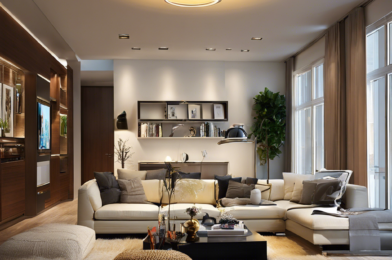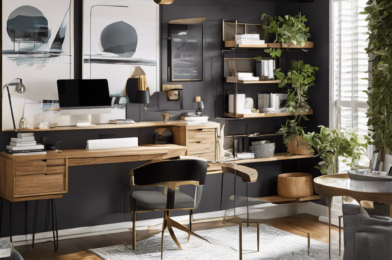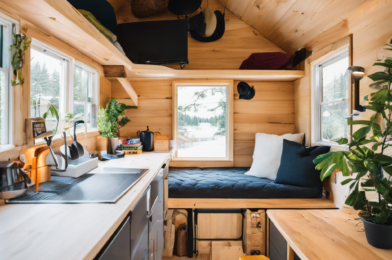Light has an incredible impact on our daily lives, influencing our moods, productivity, and overall well-being. The concept of mood lighting has gained popularity as people seek to enhance the ambiance and atmosphere of their living spaces. Creating the right lighting scheme can transform a room, making it cozy, romantic, energetic, or soothing.
So, what exactly is mood lighting, and how can you incorporate it into your home? Mood lighting refers to the use of lighting to create a specific atmosphere or emotion within a space. It involves playing with light and shadow, color temperature, and illumination levels to achieve the desired effect. A well-designed lighting plan combines three types of lighting: natural light, ambient lighting, and task lighting, each serving a specific purpose.
Natural light is the most variable and often the most appealing. The color and brightness of natural light change throughout the day and with the weather and seasons. Capitalizing on the natural light available to you and the views outside your windows will help you feel more connected to the natural rhythm of daylight.
Ambient lighting is the general illumination of a room and can be provided by natural light during the day or artificial light sources in the evening. It is often referred to as mood lighting because it creates the overall atmosphere of a room and can be used to enhance the space’s functionality and design.
Task lighting, as the name suggests, illuminates specific tasks such as reading, cooking, or applying makeup. It is usually more focused and brighter than ambient light and can be achieved through various fixtures, such as desk lamps, under-cabinet lights, or vanity mirrors.
When designing a lighting scheme for a room, it’s important to consider the activities that take place there and the ambiance you wish to create. For example, a home office should ideally have a combination of natural light and task lighting to create a bright and energizing environment. In contrast, a bedroom might benefit from softer ambient lighting and the option of lower lighting for a cozy and relaxing atmosphere.
The color temperature of light also plays a crucial role in setting the mood. Color temperature is measured in Kelvins (K) and refers to the appearance of light emitted by a bulb, ranging from warm to cool. Warm light, typically ranging from 2700K to 3000K, has a yellow-orange hue and is calming and inviting, perfect for living rooms and bedrooms. Cool light, on the other hand, ranges from 3100K to 6500K and has a blue-white appearance, often used in offices and retail spaces to promote focus and productivity.
Dimmers are a great way to create mood lighting and give you flexibility. By adjusting the brightness of a room, you can instantly change the atmosphere to suit different occasions and times of the day. For example, lower light levels can create a cozy and intimate setting, while brighter light can be energizing and stimulating.
Another way to create mood lighting is by using accent lighting to highlight specific features or areas within a room. This could be a piece of art, a plant, or a textured wall. By drawing attention to these elements, you can create visual interest and add depth to the space.
When it comes to fixtures, there are countless options to choose from. Pendant lights, chandeliers, wall sconces, and floor lamps can all be used to create ambient lighting, while recessed and track lighting are great for accent lighting. The type of bulb you choose is also important, with options ranging from incandescent and halogen bulbs, which emit warm, soft light, to LED bulbs, which offer a wide range of color temperatures and are highly energy-efficient.
To create a cohesive look throughout your home, consider using similar fixtures or design elements across different rooms. For example, you could use the same wall sconces in the hallway and bedroom or opt for floor lamps with a similar design aesthetic in the living room and home office. This creates a sense of flow and harmony, making your home feel well-designed and put together.
Incorporating smart lighting technology is another way to enhance the lighting in your home. Smart bulbs and fixtures allow you to control lighting from your phone or voice assistant, giving you the power to adjust brightness, color temperature, and even set schedules and scenes. This adds a layer of convenience and customization to your lighting design, making it easy to create the perfect mood lighting for any occasion.
When designing your lighting plan, don’t forget to consider the impact of shadows and darkness. Well-placed lighting can create interesting shadows and add depth to a room, while too much lighting can make a space feel flat and uninviting. Striking a balance between light and shadow can create a sense of mystery and intrigue, enhancing the overall ambiance.
Lastly, don’t be afraid to experiment and play around with different lighting combinations. Try incorporating a variety of light sources, such as candles, fairy lights, and lamps, to create a unique and enchanting atmosphere. By layering different types of lighting and playing with brightness and color temperature, you can design a lighting scheme that is both functional and captivating.
Creating mood lighting in your home doesn’t have to be complicated. By understanding the basics of lighting design and experimenting with different fixtures and bulbs, you can easily transform the ambiance of your living space. So, go ahead and play with light and shadow, color, and illumination to create a home that is both beautiful and inviting.


